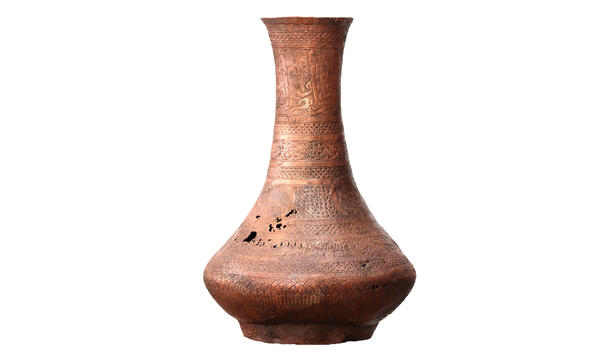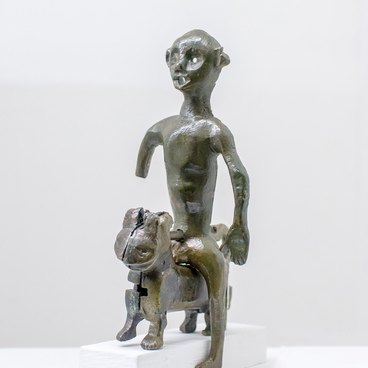The state of Volga Bulgaria appeared on the territory of modern Tatarstan in the 9th-10th century. After it was conquered by Mongol tribes, Bulgaria became part of the Golden Horde.
The Bulgars built cities as early as the 10th century: Bilyar, Bulgar, Oshel, Suvar came into being then, followed by Kazan, Kashan, Zhukotin, Kermenchuk, Mardan. Public buildings were built in towns: governmental and judicial chambers, mosques, caravansaries, and bathhouses. Thanks to the ramified network of settlements, it became safer to transport goods within the country, because robbers did not attack caravans near cities.
The largest settlements were the capital Bulgar and Bilyar. Bilyar could be compared in area, level of development, and population to the cities of Rus —Kyiv, and Novgorod, as well as Western European Rome and Paris and Asian Damascus, Baghdad, Bukhara, and Samarkand. By the 11th century, Volga Bulgaria had a clear structure of state administration, a taxation system, and a combat-ready army.
In 922, the Bulgars adopted Islam and expanded their cultural and economic ties. They traded in furs, honey and wax. In cities, the crafts developed: goldsmithing, pottery, and especially processing of ferrous and nonferrous metals.
In the collection of the Bolgar Museum-Reserve, there is a copper jug excavated on the territory of ancient Bulgar settlements. In such a vessel they kept and served drinks. Copper jugs with elaborate ornaments were expensive, so this specimen most likely belonged to a nobleman or a wealthy merchant.
The walls of the jug are covered by an artistic ornament. The odd bands of woven ornamentation alternate with the bands of vegetative, geometric patterns, and Arabic scripts. The sixth band is the most complicated in terms of graphics: four round medallions with woven texture are engraved on it, and between them, there is a canvas of octagons with inscriptions in Arabic. The eighth band depicts running animals; due to damage, scholars are unable to ascertain what they are. They may be hares or foxes.
Researchers assume that Bulgarian masters have created a jug in the manner of Syro-Egyptian bronze vessels of that time or products from the Iraqi city of Mosul.
The Bulgars built cities as early as the 10th century: Bilyar, Bulgar, Oshel, Suvar came into being then, followed by Kazan, Kashan, Zhukotin, Kermenchuk, Mardan. Public buildings were built in towns: governmental and judicial chambers, mosques, caravansaries, and bathhouses. Thanks to the ramified network of settlements, it became safer to transport goods within the country, because robbers did not attack caravans near cities.
The largest settlements were the capital Bulgar and Bilyar. Bilyar could be compared in area, level of development, and population to the cities of Rus —Kyiv, and Novgorod, as well as Western European Rome and Paris and Asian Damascus, Baghdad, Bukhara, and Samarkand. By the 11th century, Volga Bulgaria had a clear structure of state administration, a taxation system, and a combat-ready army.
In 922, the Bulgars adopted Islam and expanded their cultural and economic ties. They traded in furs, honey and wax. In cities, the crafts developed: goldsmithing, pottery, and especially processing of ferrous and nonferrous metals.
In the collection of the Bolgar Museum-Reserve, there is a copper jug excavated on the territory of ancient Bulgar settlements. In such a vessel they kept and served drinks. Copper jugs with elaborate ornaments were expensive, so this specimen most likely belonged to a nobleman or a wealthy merchant.
The walls of the jug are covered by an artistic ornament. The odd bands of woven ornamentation alternate with the bands of vegetative, geometric patterns, and Arabic scripts. The sixth band is the most complicated in terms of graphics: four round medallions with woven texture are engraved on it, and between them, there is a canvas of octagons with inscriptions in Arabic. The eighth band depicts running animals; due to damage, scholars are unable to ascertain what they are. They may be hares or foxes.
Researchers assume that Bulgarian masters have created a jug in the manner of Syro-Egyptian bronze vessels of that time or products from the Iraqi city of Mosul.



